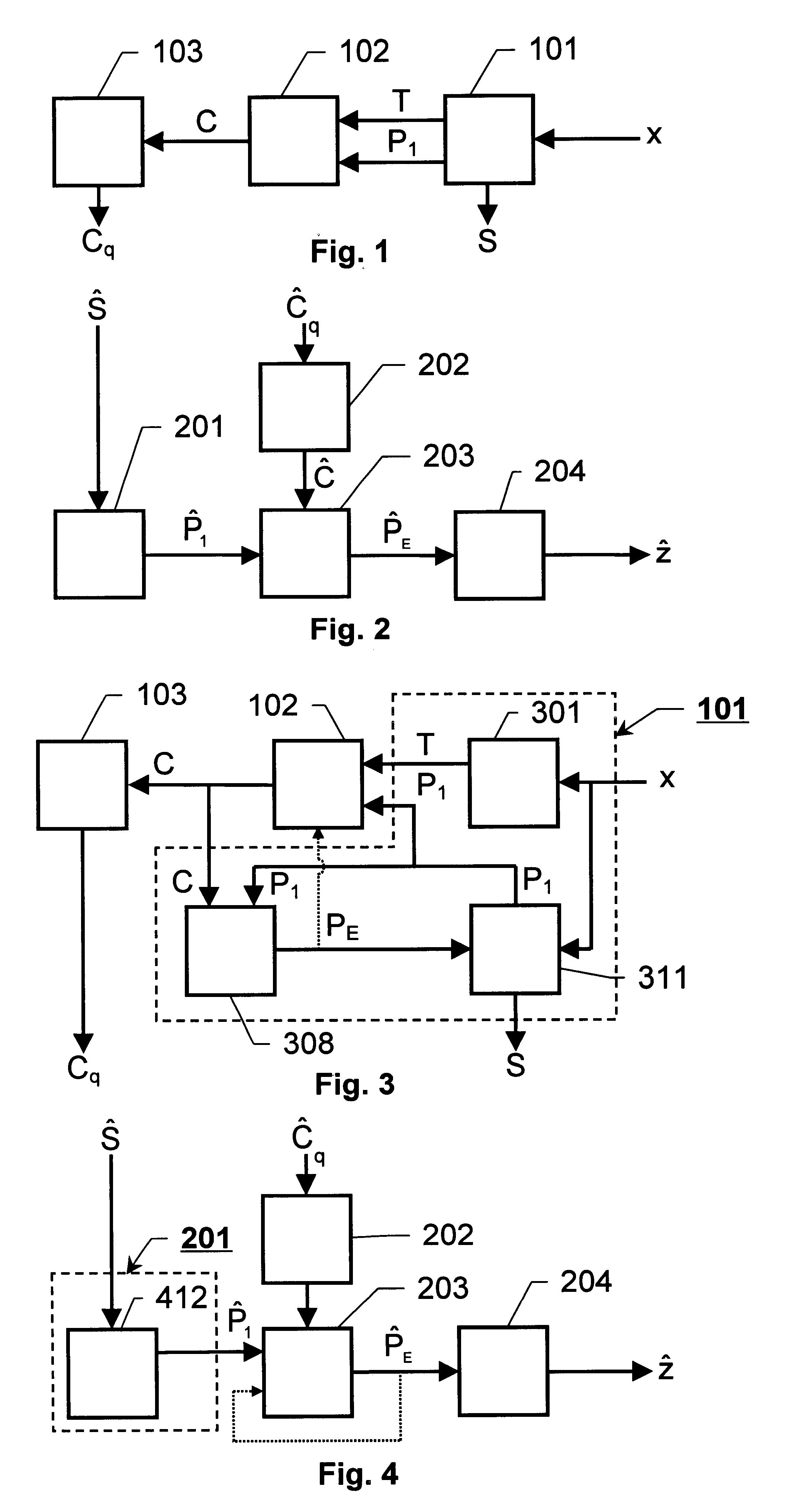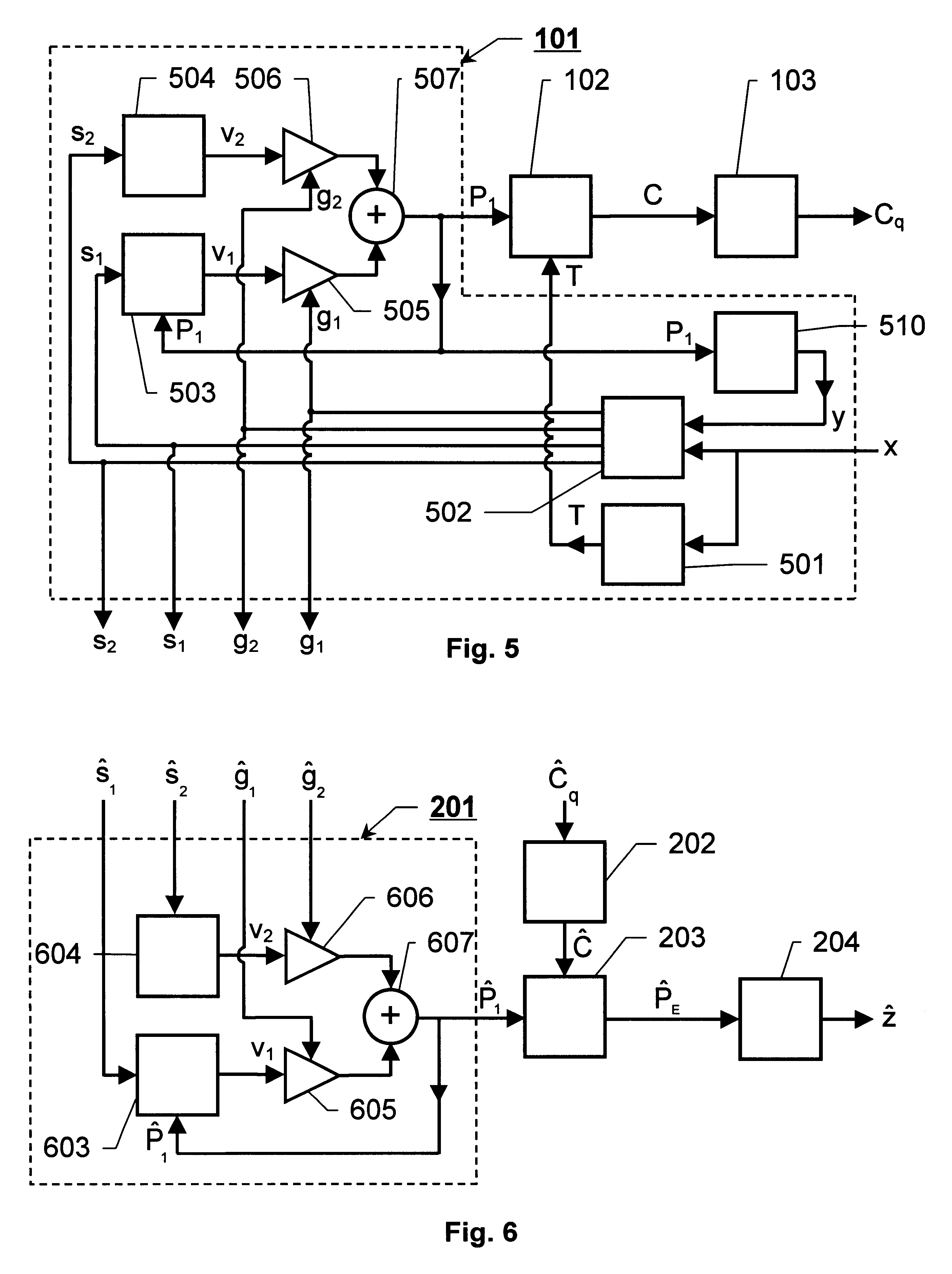Perceptually improved enhancement of encoded acoustic signals
a technology of encoded acoustic signals and enhancement, applied in the field of encoded acoustic source signals, can solve the problems of affecting the performance of speech codecs operating at rates below 16 kbps, affecting the performance of speech codecs, and affecting the quality of speech, etc., and achieving the effect of improving the enhancement rate and improving the enhancement ra
- Summary
- Abstract
- Description
- Claims
- Application Information
AI Technical Summary
Benefits of technology
Problems solved by technology
Method used
Image
Examples
first embodiment
FIG. 3 shows a block diagram over a transmitter the invention. The transmitter is a so-called LPAS-encoder (LPAS=Linear Predictive Analysis-by-Synthesis), in which the primary coder 101 includes an inverse synthesis filter 301. This filter 301 receives an acoustic source signal x and generates in response thereto a target signal T. The primary coder 101 further includes one or more units (not shown), e.g. to perform LPC-analysis, and an excitation generator 311. The excitation generator 311 receives the acoustic source signal x and produces, in response thereto, a primary coded signal P.sub.1 and encoded information S. The encoded information S is transmitted to a receiver for reconstruction of the primary coded signal P.sub.1.
An enhancement unit 308 generates an enhanced primary coded signal P.sub.E (representing an enhanced excitation signal), which is intended to simulate an enhanced reconstructed primary coded signal P.sub.E generated in a receiver, and feeds back this signal t...
second embodiment
FIG. 5 shows a block diagram over a transmitter the invention. The transmitter is a so-called CELP-encoder, which includes an algebraic code book 504.
The primary coder 101 of this transmitter includes a search unit 502 into which an acoustic source signal x is fed. An inverse synthesis filter 501 also receives the acoustic source signal x. The inverse synthesis filter 501 produces, in response to the acoustic source signal x, a target signal T that is forwarded to an enhancement estimation unit 102.
Besides the acoustic source signal x, the search unit 502 also receives a locally reconstructed acoustic source signal y, which is generated by a synthesis filter 510 likewise included in the primary coder 101. The synthesis filter 510 is identical to a corresponding filter in a receiver intended to receive and reconstruct the encoded information generated by the transmitter. The synthesis filter 510 simulates the receiver and thus enables the search unit 502 to adjust its parameters suc...
PUM
 Login to View More
Login to View More Abstract
Description
Claims
Application Information
 Login to View More
Login to View More - R&D
- Intellectual Property
- Life Sciences
- Materials
- Tech Scout
- Unparalleled Data Quality
- Higher Quality Content
- 60% Fewer Hallucinations
Browse by: Latest US Patents, China's latest patents, Technical Efficacy Thesaurus, Application Domain, Technology Topic, Popular Technical Reports.
© 2025 PatSnap. All rights reserved.Legal|Privacy policy|Modern Slavery Act Transparency Statement|Sitemap|About US| Contact US: help@patsnap.com



